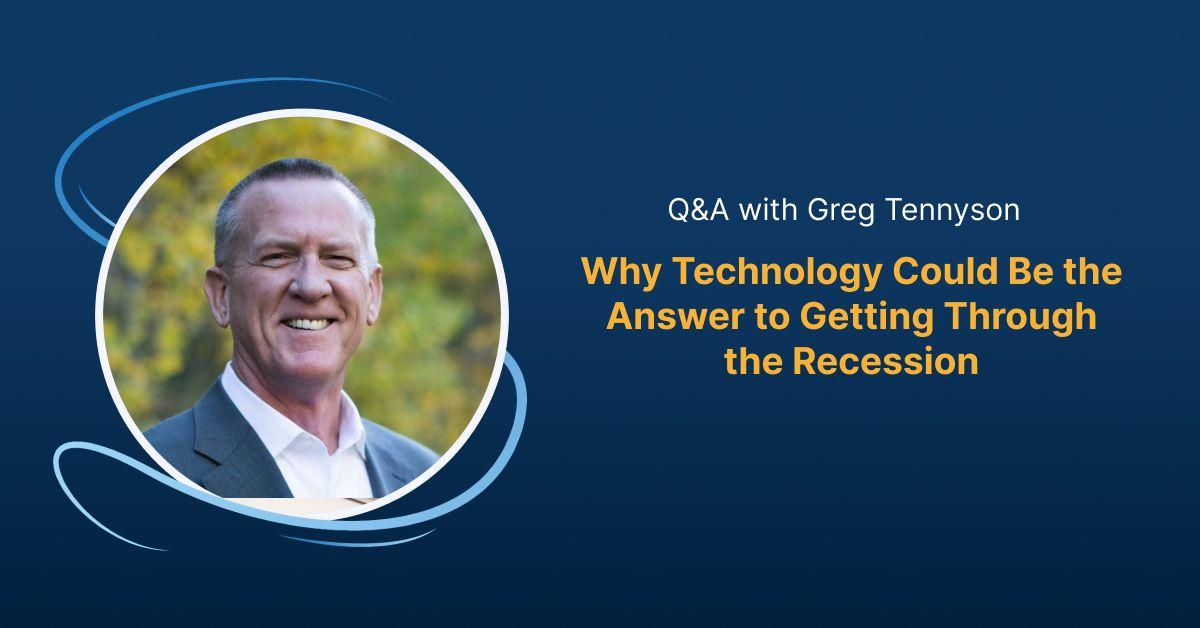January 16, 2023
Why Technology Could Be the Answer to Getting Through the Recession

Sign up for our newsletter
Stay informed with the latest trends and best practices in finance and procurement.

With an extensive background as the Vice President and Chief Procurement Officer, Greg Tennyson has first-hand experience with spend management. He will talk about his experience with finance and how technology could be the answer. Read on to find out the tips and tricks you could add to your business to keep it running through the recession.
1. Tell us a little about your background and how it relates to spend management and procurement.
I have spent the last 20 years in the space as the VP, and Chief Procurement Officer, having source-to-settle and travel-to-expense responsibilities at Oracle Corporation and salesforce.com. Most recently, I was the VP of Corporate Services at VSP Global. As a result, I understand firsthand the opportunity and challenges of spend management, technology, policy, and related processes and how to develop people. Equally important is understanding how to navigate one's culture - vision, and values which will ultimately determine the procurement team's success. Of course, procurement's offering is a key determining factor as well.
2. Given your experience in finance, how has Fintech been a game-changer?
Several external factors have played a significant role in changing procurement, for example:
1) Financial environment - inflation, recession
2) Supply chain disruption
3) Socio-political landscape
4) Expectations
To navigate those challenges, a practical model relies on advanced fintech solutions. Navigating these operating imperatives absent fintech could be disastrous.
3. Since you've seen spend management & procurement make such advances, what do you think the future may hold?
AUTOMATION - yes, all caps. Procurement is expected to do more with less, i.e., scaling their teams by hiring the right people with the right skill sets to expand their service offering and achieve more significant results. Long gone are the days' procurement has the luxury of throwing headcount at the problem. Instead, procurement needs to leverage artificial intelligence, machine learning, robotic process automation, conversation AI, and other advanced technologies. The objective is to do more with less and advance procurement to the trusted advisor role, where they play a more strategic contribution better aligned to the needs of the business.
4. Circling back to the present, what's your take on holistic procurement systems? What should companies consider before they implement?
This is a hotly debated topic. I've lived and operated in the end-to-end suite environment and what is now referred to as a composable model where procurement augments their procure-to-pay system with best-of-breed solutions. Procurement leaders need to take a step back and suss out their functional maturity, technology stack, the company's culture, and the capability of the procurement team before jumping in on a model. I've seen both models, e.g., Coupa at Salesforce.com and composable at VSP Global.
What procurement needs to understand with an end-to-end suite model is to what extent is the 'suite' is actually on the same code line. However, a number of the P2P players have built their suites through acquisition, and the reality is the point solutions are bolt-on and not on the same code line.
5. You recently joined the advisory board at PayEm - can you talk a bit about what caught your eye about their product?
PayEm is taking a unique approach to solving for better finance and procurement compliance and controls by working backward. Allow me to explain; they have over 200 customers today, primarily on the payment side. By taking a payment-first approach, the outcome is structured data enabling actionable insights, better controls, and compliance. Procure-to-pay transactions based on data clarity better lend themselves to driving savings, spend under management, more inclusive DEI/sustainability outcomes, and compliance.


